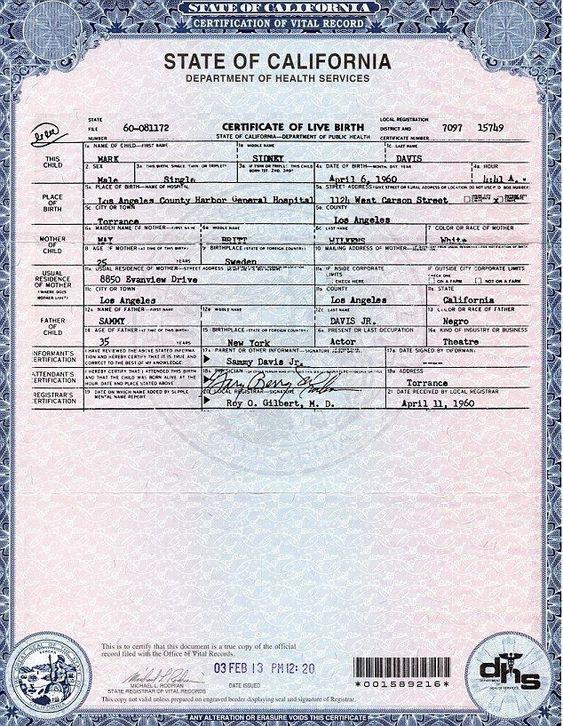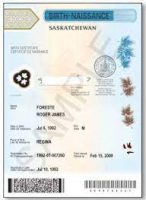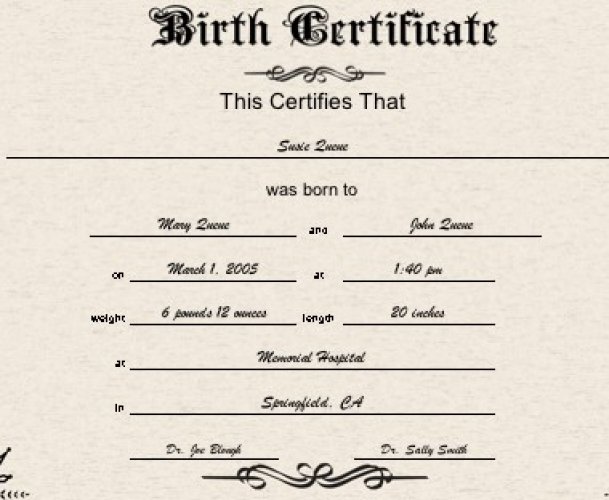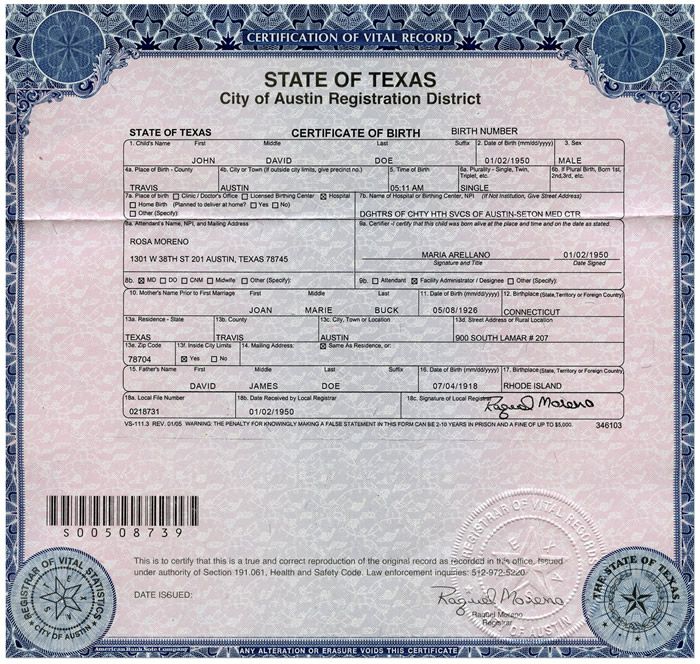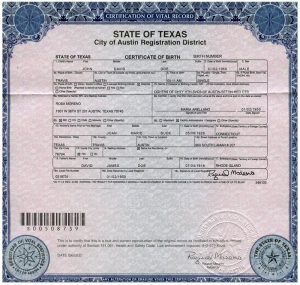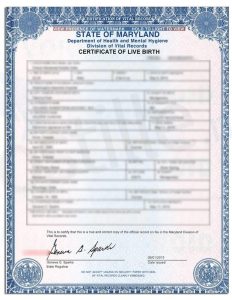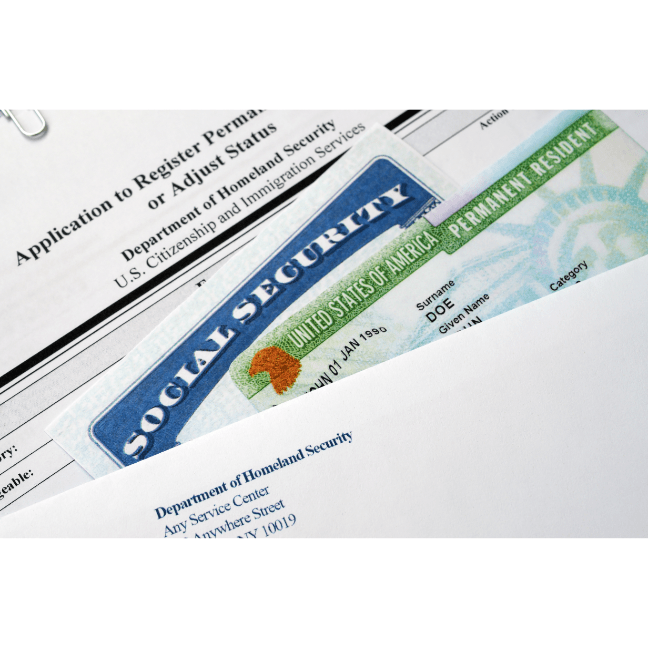While acquiring any birth certificate is important for countless individuals worldwide, we will specifically focus on obtaining one from the state of California. Due to its large population and diverse demographic, California has a unique system in place for issuing birth certificates. Understanding the specific protocols, requirements, and procedures associated with obtaining a California birth certificate online is crucial to navigate this process successfully.
In the following sections, we will explore the different types of birth certificates available in California, eligibility criteria for obtaining one, and the various methods you can use to obtain your birth certificate. Whether you are a Californian seeking your own birth certificate or someone from outside the state requiring one for legal or personal purposes, this comprehensive guide will equip you with the necessary knowledge to embark on your journey of acquiring a California birth certificate online seamlessly.
Understanding the Basics
Definition and Purpose of a Birth Certificate
A birth certificate is an official document issued by the government that certifies the birth of an individual. It serves as vital evidence of a person’s identity, age, and citizenship.
Birth certificates play a crucial role in various aspects of life, such as obtaining government identification documents, enrolling in schools, applying for jobs, getting married, and accessing government benefits. In California, a birth certificate includes essential information about an individual’s birth, such as their full name at birth, date and place of birth (city or county), gender, parents’ names including maiden name of mother if applicable, and registrar’s signature.
Additionally, it may contain other details like the time of birth and the attending physician’s name. The certificate is usually printed on security paper with specific features to ensure authenticity and prevent tampering.
Requirements for Obtaining a California Birth Certificate Online
To obtain a California birth certificate legally, you must meet certain requirements set forth by the state. These requirements aim to ensure privacy protection and maintain accurate records while providing access to those who are entitled to them. One primary requirement is that only individuals who have a direct relationship to the person named on the certificate can request it.
This includes the person themselves if they are at least 18 years old or their parent(s), legal guardian(s), child(ren), grandparent(s), sibling(s), spouse/domestic partner with valid reason or written consent from authorized individuals. Moreover, there are age restrictions for requesting one’s own birth certificate versus those requesting on behalf of others.
Individuals aged 18 years or older can request their own certificates without any additional documentation. However; minors (under 18) requesting their own certificates need consent from either one parent listed on their record or legal guardian along with proper identification documentation.
It is important to note that authorized individuals may also request informational copies of birth certificates, which cannot be used for legal purposes. These copies provide limited information and are typically intended for genealogical research or personal records
Types of Birth Certificates in California
Certified copy vs informational copy
When it comes to obtaining a birth certificate in California, it is essential to understand the distinction between a certified copy and an informational copy. A certified copy is an official document issued by the state, bearing the raised seal of authenticity.
It serves as legal proof of identity and provides complete information about the birth, including the parents’ names and any amendments made to the original record. On the other hand, an informational copy, also known as a “non-certified” or “abstract” copy, does not hold the same level of legal authority since it does not bear an official seal.
Differences in usage and restrictions
The usage and restrictions associated with certified and informational copies differ significantly. A certified copy, being a legally recognized document, is indispensable for various purposes such as obtaining identification documents (driver’s license, passport), applying for government benefits (social security), enrolling in school or college, getting married or divorced, and conducting genealogical research.
In contrast, an informational copy is primarily intended for informational purposes only. It cannot be used for any official transactions or legal proceedings since it lacks the necessary authentication.
When to choose each type based on your needs
Choosing between a certified and an informational copy depends on your specific needs and circumstances. If you require a birth certificate for official purposes such as applying for government benefits or establishing your identity during legal transactions, then a certified copy is unequivocally necessary.
On the other hand, if you are seeking personal records for genealogy research or simply want to learn more about your family history without needing it for any official matters, then an informational copy would suffice. It is crucial to evaluate your requirements carefully and determine whether a certified copy or an informational copy aligns with your intended use.
Keep in mind that while both types provide information about the birth, they differ significantly in terms of legal validity and acceptance. Therefore, make your choice wisely to ensure that you receive the appropriate document for your specific needs.
Eligibility Criteria for Obtaining a California Birth Certificate
Personal Eligibility Requirements: Navigating the Pathway to Your Birth Certificate
When endeavoring to obtain a California birth certificate, it is essential to have a comprehensive understanding of the personal eligibility requirements. These requirements are contingent upon your relationship to the person named on the certificate, which can vary depending on whether you are applying for your own birth certificate or requesting it as a parent or legal guardian. If you are seeking your own birth certificate, congratulations on taking this significant step towards preserving your personal records.
In California, individuals who wish to obtain their own birth certificates must be at least 18 years old. This age restriction ensures that individuals have reached adulthood and possess the necessary autonomy to manage their personal affairs.
On the other hand, if you are applying for a birth certificate as a parent or legal guardian, there are no age restrictions imposed. As long as you hold legal authority over the individual named on the birth certificate – whether through parenthood or guardianship – you may proceed with confidence in obtaining this vital document.
Proof of Identity and Relationship Documentation: Unlocking Access
To successfully procure a California birth certificate, along with meeting the appropriate personal eligibility requirements, it is crucial to furnish adequate proof of identity and relationship documentation. These documents serve as an indispensable gateway that validates your connection to the individual whose birth record you seek. In terms of proving your identity, various documents can be accepted by California’s vital records offices or county clerk’s offices.
Primary identification documents include government-issued identification cards such as driver’s licenses, passports, and military IDs. Additionally, secondary identification documents such as school IDs or work badges may be accepted when accompanied by supporting documentation.
To establish your relationship with the person named on the birth certificate , whether as yourself or as a parent/legal guardian , you will need to provide additional documentation. For self-applicants, proof of identity alone is generally sufficient.
However, if you are applying as a parent or legal guardian, you must furnish documents such as the child’s adoption papers, custody orders, or guardianship papers to substantiate your relationship. By meeting these critical requirements and providing the necessary documents, you are well on your way to obtaining a California birth certificate online . A document that not only solidifies your identity but also serves as a testament to the rich tapestry of life’s origins.
Methods to Obtain a California Birth Certificate
In-person application at vital records office or county clerk’s office
In-person applications offer a convenient and reliable way to obtain your California birth certificate. To initiate the process, it is crucial to identify the correct vital records office or county clerk’s office in your specific county. In the vast expanse of California, there are 58 counties, each with its own designated location for processing birth certificates.
The contact information can be easily found on the website of the California Department of Public Health (CDPH), which provides a comprehensive directory. Once you have determined the appropriate location, it is important to gather all necessary documents before visiting.
Typically, you will need a completed application form which can be downloaded from either the CDPH website or obtained directly from the vital records office. Additionally, you will need to provide proof of identity such as a valid driver’s license or passport, as well as documentation establishing your relationship to the person named on the certificate if applicable.
Furthermore, it is essential to familiarize yourself with any fees associated with obtaining a birth certificate in person. The cost may vary slightly depending on the county and type of copy (certified vs informational) requested.
Acceptable modes of payment usually include cash, check, money order, or credit/debit card. It is advisable to contact the specific office beforehand to confirm their accepted payment methods.
Online application through the California Department of Public Health (CDPH) website
The convenience and efficiency offered by online applications make them an increasingly popular choice for obtaining a California birth certificate. To begin this process, navigate to the CDPH website and locate their designated online application portal specifically designed for birth certificates. The online application process typically involves multiple steps that are clearly outlined on their website.
It is important to provide accurate and complete information as any errors or omissions may delay the processing of your request. You will be prompted to enter details such as your full name, date and place of birth, your relationship to the person named on the certificate (if applicable), and your contact information.
In addition, you will need to upload scanned copies of required documents such as proof of identity and relationship. Prior to submitting your online application, ensure that you have all necessary information and documents readily available.
This may include a valid government-issued identification document, proof of relationship (if applicable), and any additional supporting documentation as specified by the CDPH. Providing accurate and complete information upfront will help expedite the processing time for your application.
Alternative Methods
Requesting by mail through CDPH or county vital records office
Subtitle: A Convenient Option for Those Who Prefer Traditional Channels For individuals who prefer a more traditional approach, requesting a California birth certificate through the mail is a viable option. The California Department of Public Health (CDPH) and county vital records offices allow this method, providing a convenient alternative to in-person or online applications.
To ensure a smooth process, it is crucial to follow detailed instructions when filling out the request form correctly. When completing the request form, pay careful attention to accuracy and legibility.
Provide all required information, including your full name, date of birth, parent’s full names (if applicable), and any other details specified on the form. Incomplete or incorrect information might result in delays or rejection of your application.
Additionally, remember to include any necessary supporting documents such as identification or proof of relationship. Once you have correctly filled out the request form and gathered all necessary documents, carefully package them together with any required fees (in check or money order format) for processing.
It is essential to double-check the mailing address provided by the CDPH or your respective county vital records office since different offices may have distinct addresses. Consider sending your package via certified mail with tracking to ensure its safe delivery and keep proof of postage for future reference.
Utilizing third-party
Exploring Additional Options for Convenience and Efficiency If you’re seeking an even more streamlined process for obtaining your California birth certificate online, utilizing third-party services Like our organization ( Octapus Tickets ) , can provide convenience and efficiency. Several reputable companies specialize in assisting individuals with their vital record needs by offering expedited services and personalized assistance throughout the application process.
By opting for a third-party service provider, you can save time and effort as professionals handle much of the administrative work on your behalf. These services typically have a user-friendly online platform where you can fill out the necessary information, allowing them to submit your request directly to the relevant authorities.
Moreover, they often offer additional features such as tracking the status of your application and providing customer support to address any concerns. When choosing a third-party service provider, ensure that they have a solid reputation and positive customer reviews.
It’s important to research different options and compare their fees and processing times before making a decision. While utilizing third-party services may involve an additional cost, it can be well worth it for those who prioritize convenience and want to expedite the process of obtaining their California birth certificate.

